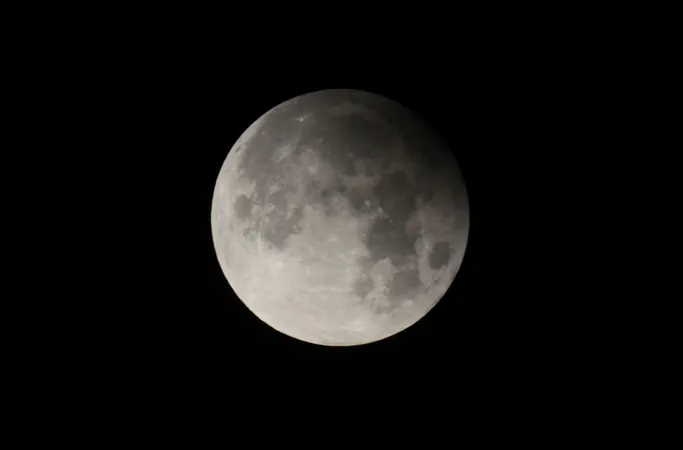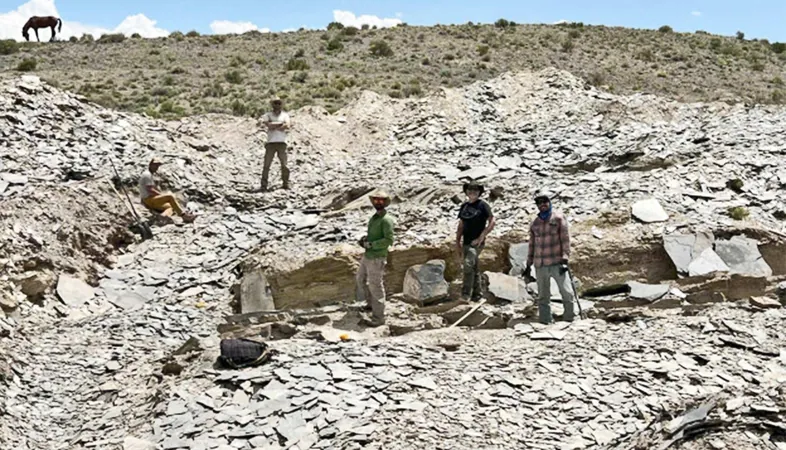
Shocking Revelation: Moon's Hidden Volcanoes Have Been Active for Over a Billion Years!
2024-11-16
Author: Olivia
Overview of the Discovery
In an astonishing breakthrough that has left scientists buzzing, new research indicates that volcanoes on the far side of the Moon, often shrouded in mystery and darkness, have been erupting for over a billion years. This groundbreaking discovery shines a new light on the lunar landscape we thought we knew.
Details of the Chang’e-6 Mission
Collaborating researchers from the United States and China have finally cracked the code surrounding the geological history of the Moon's elusive far side, which faces away from Earth. After analyzing samples from the Chang’e-6 mission, the first-ever spacecraft to successfully land and return samples from this remote area, scientists have found evidence of ancient supervolcano eruptions that sculpted massive craters across this hidden lunar hemisphere.
Significance of the Findings
The Chang’e-6 mission returned 2 kilograms of lunar rocks and soil, revealing volcanic rock fragments dated at around 2.8 billion years old, with one standout fragment pushing the age marker back to an incredible 4.2 billion years. This pivotal finding reinforces the notion that volcanic activity wasn’t just limited to the Moon’s visible side, but that the far side has a rich and complex geological narrative of its own.
Academic Impact of the Research
The results of this significant study are published in globally renowned journals, Nature and Science. Professor Qiuli Li from the Institute of Geology and Geophysics remarked on the monumental importance of this research, recognizing it as the first geochronology study derived from the Chang’e-6 samples, marking a historic moment for lunar and planetary science as a whole.
Quotes from Experts
“Obtaining samples from this region is crucial, as it has previously been a data desert,” said Christopher Hamilton, a planetary volcano expert at the University of Arizona. The implications of this discovery are profound, as they validate previous suggestions from NASA’s Lunar Reconnaissance Orbiter that hinted at a potentially volcanic past for the Moon's far side.
Implications for Lunar Geography
Despite earlier theories regarding the Moon's unique geography—its far side is notably more cratered and lacks the vast, dark plains formed by ancient lava flows that characterize the near side—the development of this volcanic narrative deepens the mystery of why these two hemispheres are so strikingly different.
China's Lunar Exploration Efforts
China's ambitious lunar exploration program has made waves in recent years, with the Chang’e-4 mission becoming the first to touch down on the Moon’s far side in 2019, followed by the return of lunar rocks from the near side by the Chang’e-5 in 2020. These missions underscore the nation’s commitment to expanding humanity's understanding of the Moon.
Future Research Prospects
With these ancient eruptions now confirmed, researchers are eager to explore further, seeking answers about how this volcanic activity persisted for so long on the lunar far side. The quest to unlock the Moon's secrets continues, promising to reshape our understanding of our closest celestial neighbor in ways we never thought possible!
Conclusion
As scientists set their sights on future missions and research, one thing remains certain: the Moon still has many surprises hiding in its shadowy depths!









 Brasil (PT)
Brasil (PT)
 Canada (EN)
Canada (EN)
 Chile (ES)
Chile (ES)
 España (ES)
España (ES)
 France (FR)
France (FR)
 Hong Kong (EN)
Hong Kong (EN)
 Italia (IT)
Italia (IT)
 日本 (JA)
日本 (JA)
 Magyarország (HU)
Magyarország (HU)
 Norge (NO)
Norge (NO)
 Polska (PL)
Polska (PL)
 Schweiz (DE)
Schweiz (DE)
 Singapore (EN)
Singapore (EN)
 Sverige (SV)
Sverige (SV)
 Suomi (FI)
Suomi (FI)
 Türkiye (TR)
Türkiye (TR)